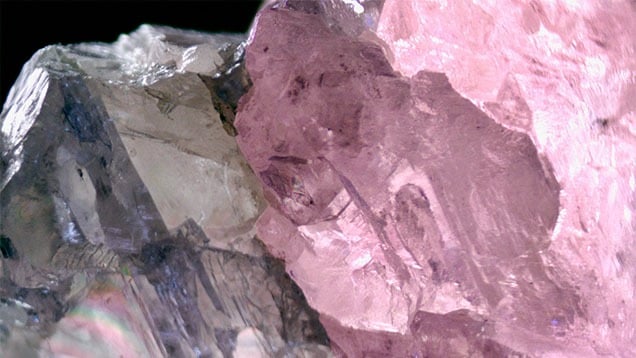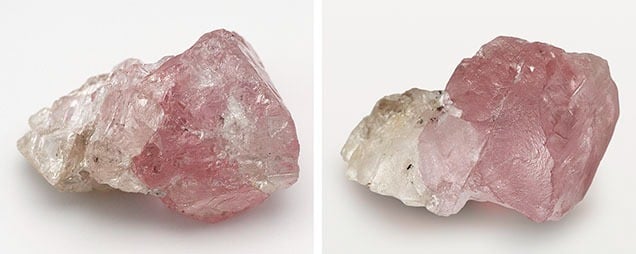Unique Pink And Clear Diamond Unearthed In Botswana
Language
Reading Level
Listen to Article
Alignment

The Karowe Mine in Botswana, Southern Africa, is famous for producing large, high-quality diamonds. Previous notable finds include the 1,758-carat Sewelô and the 2,492-carat Motswedi, the second-largest diamond ever found. However, the diamond revealed on October 15, 2025, has captured the attention of gem experts and collectors worldwide. Weighing 37.41 carats, it is half pink and half clear!
Diamonds form deep underground when carbon is exposed to intense heat and pressure over millions of years. Most are clear, but some pick up colors like yellow, blue, or green from tiny amounts of other elements.
But pink diamonds are different. They form when a diamond is subjected to intense pressure and heat deep underground during tectonic activity. This changes the diamond's crystal structure, giving it a pink hue. However, the pressure must be just right — too little, and the diamond remains clear; too much, and it turns brown. As a result, pink diamonds are extremely rare. The Argyle Diamond Mine in Australia produced over 90 percent of the world’s pink diamonds before it closed in 2020. But only about one in every thousand diamonds found there was pink.
"It's kind of like 'Goldilocks,'" Luc Doucet, senior research geologist at Curtin University, told Live Science. "There are a lot of brown diamonds, and very, very few pink diamonds."

Bicolored diamonds are even rarer. The few found in the past have generally been very small — usually under 2 carats. This makes the recent find all the more remarkable. Scientists believe this bicoloured diamond formed in two stages. The pink part formed first, and then a new clear section grew and fused to it.
Experts are currently evaluating the quality of this yet-to-be-named diamond. Depending on the results, it could be cut into smaller polished gems, kept intact as a rare rough specimen, or displayed in a museum or special exhibition.
Resources: ZMEscience.com, diamondworld.net, Livescience.com